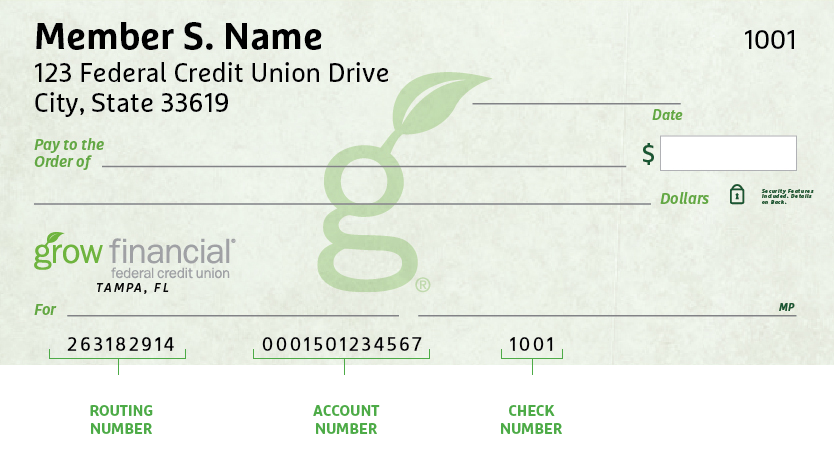- Personal
- Membership
- Membership
- Rates & Fees
- Checking
- Checking
- Personal Loans
- Personal Loans
- Wealth Management
- Investment Services
- Financial Advisors
- Resource Center
- Business

March 14, 2025
Budgeting Basics: 3 Easy Steps to Take Control of Your Finances
Ready to take control of your finances but not sure where to start? A budget is one of the most powerful tools to help you save more, spend smarter and reduce financial stress.
The good news? Budgeting doesn’t have to be complicated. Follow these three simple steps to create a budget that fits your lifestyle and financial goals.
Step 1: Know your income and expenses
Before you create a budget, you need to understand where your money is going. Start by listing:
- Your income – Include your paycheck, side hustle earnings and any other sources of money
- Your fixed expenses – Think about rent/mortgage, utilities, insurance, loan payments and necessary subscriptions
- Your variable expenses – Consider groceries, dining out, entertainment, shopping and other flexible spending
Look for areas where you might cut back. Maybe you’re paying for a subscription you rarely use or dining out more than you realized. And don’t forget about late fees — those can add up quickly! Setting reminders for bill due dates will help you avoid unnecessary charges and free up more money for things that matter.
Step 2: Pick a budgeting method that works for you
Now that you have a clear picture of your finances, it’s time to choose a budgeting style that fits your life. Here are two popular options:
Zero-based budgeting
This method ensures that every dollar is assigned to a category — bills, savings, debt repayment or spending — so that at the end of the month, your income minus expenses equals zero. It’s great for sticking to a plan and cutting overspending, but it does require close tracking and more discipline.The 50/30/20 approach
This method is popular for a reason. It’s simple and customizable to your life without being too strict. With the 50/30/20 approach, you divide your income into three broad categories:- 50% for needs (housing, utilities, transportation, food and bills)
- 30% for wants (dining out, entertainment, shopping)
- 20% for savings & debt repayment (rainy day fund, retirement savings and tackling existing debt)
Our favorite feature of this method is the flexibility. You can alter the percentages to meet your needs as long as you understand the underlying concept of needs, wants, savings and debt.
No matter which method you choose, whether it is one we mentioned here or another popular budgeting strategy, the key is consistency. Pick a system that works for you, adjust it as needed and stick with it!
Step 3: Automate your savings
One of the easiest ways to build savings is to set it and forget it. Automate a portion of your paycheck to go straight into savings before you even see it. Doing this removes the temptation to spend!
Pro tip: Start small if you need to. Even saving just 1 to 5% per paycheck adds up over time. Begin saving as soon as possible so your money has time to grow, thanks to the power of compound interest.
Why budgeting matters
Switching from free-form spending to budgeting takes practice, but it’s worth it. A budget helps you avoid stress and ensures you’re on the path to financial freedom. By sticking to your budget, you’ll pay off debt faster, build savings and feel more in control of your money.
Ready to start saving?
Accounts are subject to approval.
Posted In:
How to Find Your Routing & Account Numbers
When you make a payment online, by phone or on a mobile device, you may be asked for our routing number and your checking account number. Credit unions and banks use these numbers to identify accounts and make sure money gets where it’s supposed to be. You’ll also need to provide your routing and checking account numbers for:
- Direct deposits
- Electronic checks
- Military allotments
- Wire transfers
Where to Find Your Routing & Checking Account Numbers
Your personal checks include both our routing number and your account number, as shown on the Grow check example below.

Don’t have a Grow check? No worries.
Visit any Grow store and ask for a Direct Deposit Form. It lists both your routing number and checking account number.
Making a Loan Payment
Incorrect Phone Number Alert
We’ve identified an incorrect phone number listed in a letter sent to a select group of new members with auto loans. The incorrect number is NOT affiliated with Grow. Please be sure to use our official phone number, 800.839.6328, which you can verify on our Contact Information page. For your security, keep your personal information safe and avoid sharing it over the phone, email or text message. We will never ask you for your credit or debit card security code, expiration date or PIN, login security codes, or your online banking password.
When it comes to making payments, we try to make it as painless as possible to pay your loan every month. We have several different ways to pay, including convenient online options.
Pay Online
You have two ways to pay online by transferring funds from another bank or credit union.
- Grow Online Banking (Preferred payment method for any loan)
This is the simplest way to pay your loan. You can make one-time payments or set up automatic recurring payments in Grow Online Banking. Once you log in, select “Transfer/Payments” from the menu. If you’re not enrolled in Grow Online Banking yet, you can set up your account in just a few minutes.
Log In
- Debit Card or ACH (Available for auto, personal loans and HELOCs)
Note: ACH and debit card payments are not available for credit cards or most mortgages, except HELOCs.
We accept ACH payments with no additional fees, consumer Mastercard® and Visa® debit cards with a convenience fee of $4.95, or commercial Mastercard® and Visa® debit cards with a convenience fee of 2.95% of the payment amount. To get started with an online ACH or debit card payment, select Pay Now below.
Pay Now
Pay by Mail
You can also pay any Grow loan by check through the mail. Please remember to include your account number and Grow loan number on the check. (For credit card payments, please do not write your 16-digit credit card number on the check, which can cause a delay in processing the payment.)
Address for auto, credit card, personal loan and HELOC payments:
Grow Financial Federal Credit Union
P.O. Box 75466
Chicago, IL 60675-5466Address for personal first or second mortgages and home equity payments:
Grow Financial Federal Credit Union
P.O. Box 11733
Newark, NJ 07101-4733You Are About To Leave GrowFinancial.org
At certain places on this site, there are links to other websites. Grow Financial Federal Credit Union does not endorse, approve, represent, certify or control those external sites. The credit union does not guarantee the accuracy, completeness, efficacy, timeliness or accurate sequencing of the information contained on them. You will not be represented by Grow Financial Federal Credit Union if you enter into a transaction. Privacy and security policies may differ from those practiced by the credit union. Click CONTINUE if you wish to proceed.
